Friends of Harper
November 17, 2012 • 32 Comments • Posted in guest blog, guide dogs, Seeing Eye dogs, UncategorizedLoyal blog readers know that my third Seeing Eye dog Harper was traumatized after being clipped by a car in Chicago traffic last year. When it became clear that this heroic Yellow Labrador couldn’t work any more, our friends Chris and Larry agreed to give him a home with them in Wheaton, a quiet Chicago suburb. I’m sharing this update from Chris as a guest post in honor of Thanksgiving — Mike and I are so thankful to have Harper in such loving hands.
Looking forward to year two
by Chris Towles
Has it been a year since Harper retired and came to live with us? I can’t imagine our house without him. When he came to us last year, he did fine in the house and loved playing in the backyard, but walking anywhere on a leash was tough. He would often refuse to budge, cowering at times, planting his paws so firmly that we could not get him to move, all the time with a look on his face that seemed so troubled and anxious it would just break your heart.
We started by taking small steps, going no further than one house away, then two houses. I would walk backwards most of the time, doing a lot of coaxing and no leash. We had tried treats, toys, other dogs, but nothing really worked until we hit on the “we walk backwards to get Harper to walk forward” technique.
Finally after a couple of months, we were able to get all the way around the block. That seemed like such a huge accomplishment. Building on this success, and after lots of trial and error with various collar and leash combinations, we found that a “Premier EasyWalk” harness and a retractable leash were key in convincing Harper that our walks were less about work, and more about fresh air and exercise.
Now when we walk, we get loads of compliments on how well behaved Harper is. People are always amazed to hear the heroic story of this lovable yellow lab who has become such a part of our life. We gladly acknowledge that our training is a small part of who he is, and that the credit really goes to the folks at The Seeing Eye who trained and cared for him so lovingly. These days we can walk over three miles on the bike paths and in the forest preserves without problems, and with all of us facing the same direction — yeah! .
Harper has a special knack for doing things that warm our harts. Every night he meets me at the back door, dancing and wagging his tail. Every morning he’s an alarm clock, laying his big ol’ Labrador head on the bed right next to Larry and breathing loudly – I love it! He’s great around kids and has managed to turn my dog fearing nieces and nephews into dog lovers. He’ll play catch, keep away and tug-o-war with them for hours, while being incredibly gentle with the little ones. Neighborhood kids also have great fun playing with our Harper.
Harper has made some dog friends too. He and Beau, the collie next door, wear themselves out running and chasing each other around the back yard. Harper also looks forward to playing with Wallace, another yellow lab who lives down the street.
Occasionally I take Harper to my office, where he has several FOH (Friend’s of Harper – Beth is president of the club). He helps to relieve workplace stress just by hanging out and letting people pet him.
We’re looking into getting certified as a therapy animal team and maybe spending some time with veterans at a VA facility. Larry and I were both in the Army, so the idea of sharing Harper’s special calming skills with veterans seems like a good fit. I can’t wait to find out what year two has in store for us.
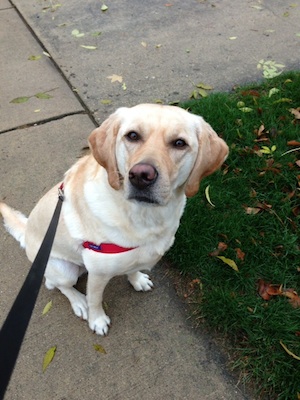
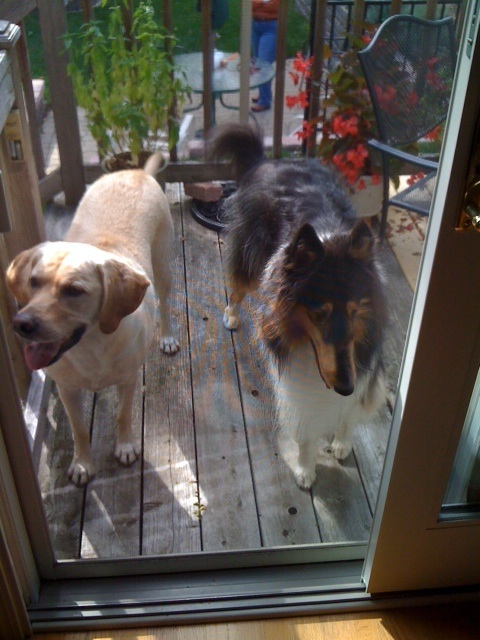
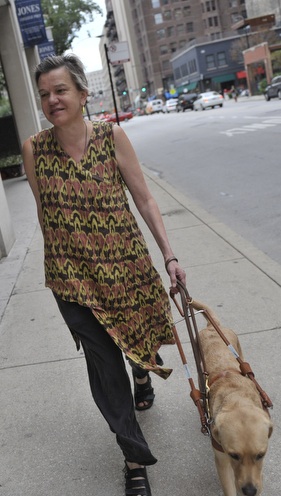
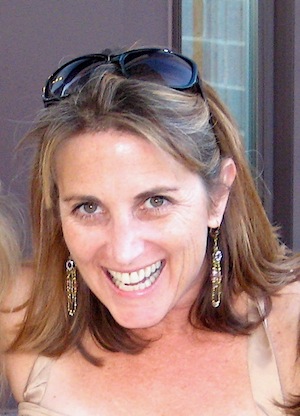
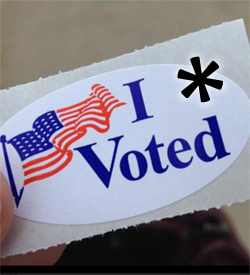 I lost the right to vote privately and anonymously in 1985. That’s the year I lost my sight. After that, I needed Mike to help me with a ballot. One time Mike was out of town during elections, so a polling judge from the Republican party and a polling judge from the Democratic party squeezed into the booth with my Seeing Eye dog and me — they both had to be there to confirm the ballot was being marked the way I’d asked.
I lost the right to vote privately and anonymously in 1985. That’s the year I lost my sight. After that, I needed Mike to help me with a ballot. One time Mike was out of town during elections, so a polling judge from the Republican party and a polling judge from the Democratic party squeezed into the booth with my Seeing Eye dog and me — they both had to be there to confirm the ballot was being marked the way I’d asked.
